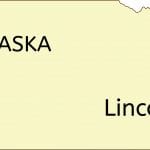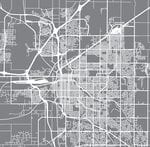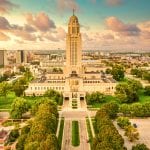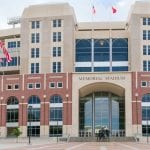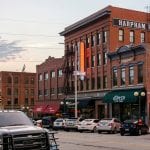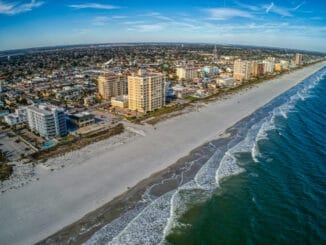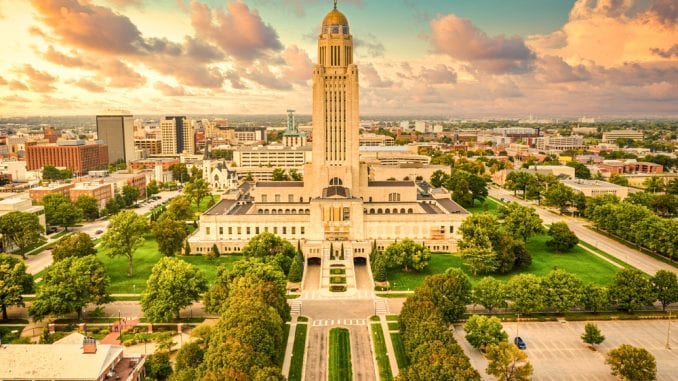
Map of Lincoln Nebraska Area
BOOK HOTEL IN ANY PART OF LINCOLN AT GREAT PRICES
Whether you live in Lincoln, NE, or are visiting for the first time, this article will provide you with a wealth of information regarding this charming midwestern city.
Where is Lincoln, Nebraska, located on the US Map?
Founded in 1856 as the Village of Lancaster, Lincoln became Nebraska’s state capital in 1867. Located in northern Lancaster County along the east bank of Salt Creek, Lincoln is one of the great capitals of the Midwest plains.
The closest major cities to Lincoln, which you can find in the southeastern corner of Nebraska, are:
- Omaha, NE: 50 miles
- Kansas City, MO: 160 miles
- Wichita, KS: 218 miles
- Tulsa, OK: 323 miles
- Minneapolis, MN: 339 miles
How big is Lincoln, NE? Size and Population?
According to the United States Census Bureau, Lincoln’s population of 289,102 makes it Nebraska’s second most populous city, coming in only behind Omaha. Lincoln is ranked the 68th largest city in the US.
How big is Lincoln? Check out these numbers:
- City of Lincoln: 96.194 mi²
- Lincoln’s metro area: 5,343 mi²
A Brief History of Lincoln
Lincoln, or Lancaster at the time, got its start as a salt trading post, although settlers quickly abandoned their salt mining efforts due to mining, shipping, and legal challenges.
The small settlement of Lancaster entered the spotlight when it was chosen over the larger city of Omaha to become the capital of Nebraska in the 1850s.
Omahans, whose city had been the territorial capital since 1854, weren’t thrilled with the move but were outnumbered. It’s even said that officials transported government documents from Omaha to Lancaster in covered wagons to keep the peace.
On the other hand, those south of the Platte River, known as “South Platters,” welcomed this move as the state capital would now be on their side of the river.
Around this time, government officials renamed Lancaster. Lincoln was born.
Lincoln experienced a boom in its population with the arrival of the railroad system in the 1870s. Locomotive and repair shops in suburban towns gave the economy quite the boost, with Lincoln eventually annexing these towns. Lincoln redrew its city boundaries, taking over the neighborhoods of Havelock, College View, University Place, and Bethany in the late 1920s.
Of course, the depression of the 1890s along with corruption in local government brought growth to a screeching halt, but not for long.
The economy got a much-needed boost during the early 20th century when a significant influx of Volga Germans from Russia settled in Lincoln. The architecture of houses and churches in the South Bottoms neighborhood reflects this period when Germans were the largest immigrant group in Lincoln.
Lincoln has long focused on education, with the University of Nebraska, private colleges, and trade schools being a major draw. In addition, Lincoln invested in hospitals, prisons, and a modern capital building.
Miles of flat land and wide-open skies brought aviation business to Lincoln. Charles Lindbergh attended the Lincoln Flight School in 1922. In 1930, the airport became known as Lindbergh Field.
Over the next several decades, Lincoln slowly became the modern midwestern cosmopolitan city that it is today.
Lincoln Weather
Lincoln experiences all four seasons with warm summers and cold, sometimes bitter, winters.
According to US Climate Data, the average high temperature in spring, summer, fall, and winter months are as follows:
- April: 64 degrees Fahrenheit
- July: 89 degrees Fahrenheit
- October: 66 degrees Fahrenheit
- January: 45 degrees Fahrenheit
Situated in the Great Plains, Lincoln tends to see thunderstorms and tornadoes during the warmer months.
If you’re curious about weather trends in Lincoln, check out these statistics:
- Lincoln enjoys 214 sunny days each year, which is higher than the United States’ average of 205 sunny days.
- Lincoln averages 31 inches of rain annually, while the United States’ average is 38 inches.
- Lincoln averages 26 inches of snow annually, while the United States’ average is 28 inches.
What is Lincoln, NE known for?
Lincoln may be located in the prairie fields of the midwest, but it is a vibrant city full of museums, shops, restaurants, bars, and art galleries.
Lincoln is at its core a college town, with the University of Nebraska-Lincoln’s campus located in the heart of the city. With that comes a lively, active population always looking to enjoy all that the city offers.
One of the best ways to discover what Lincoln is known for is by visiting the city’s museums, government buildings, gardens, and other attractions. You will get a glimpse into the city’s history and spirit, giving you perspective on what Lincoln is known for.
- Nebraska State Capitol: Is the third time a charm? Well, that’s how many tries it took Nebraska to get it right. The first two takes had structural issues, so construction on the third began in 1922 and lasted ten years. The architecture radically differed from traditional capitol buildings, with an office tower soaring 400 ft into the sky. The building is full of history, with carvings documenting 3,000 years of democracy. If you are curious about what’s on top of the building, well, it’s a 19-foot-tall bronze figure of “The Sower.”
- Historic Haymarket District: The Historic Haymarket District is incredibly charming with its brick streets, restored turn-of-the-century brick warehouses, a water tower fountain, and a mural showcasing the area’s locomotive history. It’s a great place to shop, grab a bite to eat or sip on beer from Nebraska’s first microbrewery, check out some local art, or go antiquing. There are festivals and farmer’s markets to enjoy throughout the year as well.
- University of Nebraska State Museum: This Smithsonian Affiliate is an absolute must-see for natural history fans and anyone else who likes cool things. For example, the museum is home to a spectacular display of fossilized elephants and “Archie,” the world’s largest composite mammoth fossil. The Mueller Planetarium offers stargazers the opportunity to take in shows featuring everything from blacks holes to solar superstorms. Make sure to check out the University of Nebraska campus in Lincoln afterward, unless you are too tired from enjoying the museum’s four floors (70,000 sq ft) of interactive, engaging exhibits.
- International Quilt Study Center & Museum: The International Quilt Museum celebrates the artistic and cultural significance of quilts. Located on the University of Nebraska-Lincoln’s campus, the museum boasts the world’s largest publicly held collection of quilts. Visit the vibrant, colorful museum to learn about the role quilts have played in our lives from the 1700s to the present day.
- Lester F. Larsen Tractor Test and Power Museum: After the Nebraska State Legislature passed the Tractor Law in 1919, engineers and scientists worked to come up with tractor performance and power standards to meet the new requirements. These tests were conducted in a tractor testing laboratory at the University of Nebraska-Lincoln’s campus until 1980 when the tractor testing moved to a larger facility. The old tractor testing facility is now the Lester F. Larsen Tractor Test and Power Museum, a fantastic ode to the history of farming technology.
- Sunken Gardens: It’s hard to believe these gorgeous gardens were originally a dumpsite. In 1930, the area was transformed into a lush garden oasis creating a peaceful escape into nature for visitors. In 2005, the Sunken Gardens underwent renovations, which brought improvements such as parking, walkways, handicap accessible entrances, sculptures, a green space for events, and a cascading waterfall.
- Museum of American Speed: Get ready to start your engines! The Museum of Speed, founded in 1922, is 150,000 square feet of exhilarating exhibits celebrating all things fast, faster, and fastest. Located on the Speedway Motors campus, the museum showcases engines, race cars, and automobiles of yesteryear to present times. It’s truly a unique experience that will leave you wanting to put the pedal to the metal.
- Pioneers Park Nature Center: The Pioneers Park Nature Center gives visitors a glimpse of life in the great plains. Situated on 668 acres, the nature center features 8-miles of hiking trails, herds of bison, raptor exhibits, interpretative buildings, a children’s play area, a bird garden, and more. It’s a wonderful way to enjoy the great outdoors while learning about Nebraska’s history.
- Sheldon Museum of Art: This is art appreciation at its finest. The Sheldon Museum of Art, located across the street from the University of Nebraska-Lincoln, has an exceptional collection (over 13,000 works of art!) of American Impressionism, 19th century still life and landscape, pop, contemporary, minimalism, abstract expressionism, geometric abstraction, and early modernism art. The Sheldon Museum of Art has earned some of the highest recognitions museums can receive. It’s well worth the visit.
- National Museum of Roller Skating: Founded in 1980, the National Museum of Roller Skating is a unique and memorable experience where visitors can learn about the history of roller skating. The museum’s exhibits contain memorabilia dating back to the early 19th century. In fact, it’s the largest collection of roller skating artifacts in the world. Whether you grew up roller skating, hit the rink every weekend, or just like neat historical exhibits, this museum is a must.
There is plenty to see and do in the city of Lincoln, as you can see in the list above, which is just barely scratching the surface when it comes to all that Lincoln has to offer. There are hundreds of shops, bars, restaurants, art galleries, and boutiques to check out. Locals are quite friendly with their midwestern charm and are usually more than willing to give recommendations.
Interesting Facts About Lincoln
- The University of Nebraska’s Professor Roger Mandingo invented the McDonalds’ McRib® Sandwich in 1972.
- Bet you can’t say this without humming its trademark tune: “Here’s Johnny!” Johnny Carson, a famous late-night talk show host, is from Lincoln.
- The Nebraska Cornhuskers have sold out every one of its home games at Memorial Stadium since 1962. Go Big Red!
Is Lincoln a good place to live?
According to Livability.com, Lincoln is indeed a great place to live. The midwestern city placed 12th place in Livability’s 2020 Top 100 Best Places to Live.
There’s an incredibly low unemployment rate of 3.3%. With seemingly endless job opportunities at the University of Nebraska, Lincoln Public Schools, and Bryan Health Medical Center, the future is yours for the taking in this city.
It’s also relatively affordable to live in Lincoln – check out these numbers from Livability:
- Median Household Income: $56,879
- Median Home Value: $183,852
- Housing Affordability Index: 130
- Percent of Adult Population with 401(k): 17.50%
Lincoln’s public school system is highly rated and has made several “best of” lists for families.
If you’re curious as to whether or not people love living in Lincoln, hundreds of Niche.com reviewers give the city four out of five stars. These LIvability statistics might interest you as well:
- Volunteerism Rate: 19.10%
- Voting: 54.60%
- Diversity Index: 42.00
What are the best areas to live in Lincoln, PA?
How do Lincoln’s older neighborhoods, such as Havelock, College View, Belmont, and Bethany, stack up against newer, trendier downtown neighborhoods? Or how about the suburbs?
According to almost every survey, Family Acres, Bishop Park, Crown Pointe, Country Club, and Colonial Hills are some of the best neighborhoods in Lincoln.
However, the “best” area to live in can oftentimes be very much objective. Are you concerned about schools? Distance to work? Crime rates? A great source of information on neighborhoods in the city of Lincoln can be found here.
We hope this article has provided you with what you are looking for regarding Lincoln, Nebraska.

